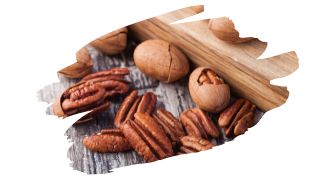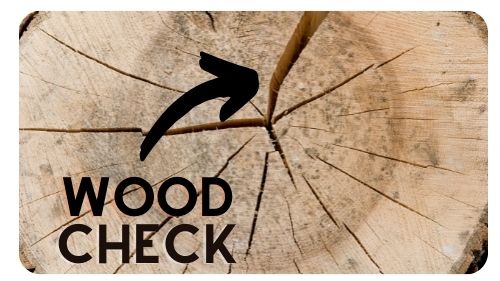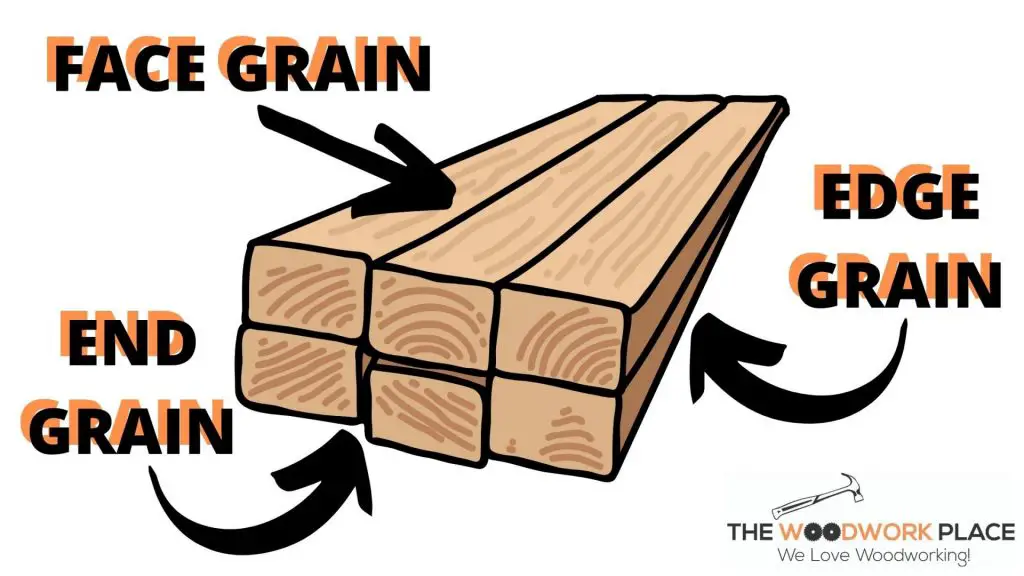The best type of wood for carving depends as much on your technique, than on the wood itself. And the range of woods you can realistically use can vary wildly.
Tough hard woods are great for power tooled carving styles. Whilst soft pliable woods are better suited for delicate cuts and whittling.
But, what about Pecan wood? Is Pecan suitable for carving at all?
Well, in this post, you’ll discover why wood density matters when it comes to whittling. You’ll also find out which carving style Pecan is best suited for. And keep reading to learn a simple way to prevent Pecan wood from cracking.

This post may contain affiliate links to products that we receive a commission for (at no additional cost to you). Learn more here.
What Is The Best Wood For Woodcarving?
The answer to this wholly depends on your wood carving style.
Some carving styles use hand tools and require a light touch. So, these carving techniques require quite low density soft pliable woods.
On the other hand, there are some carving styles that need a heavier hand — and in some cases even require power tools. So tougher wood types are more suited for these techniques.
OK…So What Types Of Wood Are Best For Different Carving Techniques?
Well, when it comes to light touch carving that uses hand tools, you should use pliable woods.
So for whittling, Basswood and White Pine are good choices, because these two timbers don’t require a lot of force to cut. And, these timber types also hold designs very well.
For styles that require a bit more force, (such as chip carving), lumber such as Black Walnut and Cherry, are ideal.
But, when it comes to intense carving styles — of the kind that require power tools — you need very tough timber. So, for styles, like wood turning and chainsaw carving, you need to use a tough timber like European Oak (a.k.a White Oak).
What About Pecan Wood? What Type Of Carving Style Is Pecan Wood Suited For?
One of the first things you need to know about a woods suitability for a carving style, is its toughness.
And, one of the ways that we measure the hardness of a particular wood, is by checking its Janka rating.
That Janka rating measures how much force it takes to make a dent in a piece of wood. The higher the Janka rating, the more force it takes. And the more force it takes, then the harder the timber.
Now, when it comes to power tool carving styles, (such as wood turning and chainsaw carving), White Oak is a great choice wood for these particular techniques.
White Oak has a Janka rating of 1290 lbf. That means it will take 1290 pounds of force to make a dent in this tough durable lumber.
Still, when we compare this against Pecan woods Janka rating, this hardwood is even tougher than Oak. That is because Pecan woods Janka rating is a very solid 1820 lbf.
So What Does This Mean For Carving With A Wood Like Pecan?
Well, chainsaw carving is primarily done outdoors. So, any wood you use for chainsaw carving needs to be rot-resistant enough to shrug off the effects of outdoor humidity. This is why durable White Oak is suitable for Chainsaw carving.
Related Post: Is White Oak Good For Making Durable Outdoor Furniture?
However, Pecan wood is not rot resistant. And even the dense heartwood of this tree will succumb to bugs and insects. So, Pecan wood isn’t the right wood for Chainsaw carving.
Nevertheless, you can use Pecan wood for wood turning…but with one small caveat. You see, Pecan wood — particularly green Pecan wood — is very prone to cracking.
Green wood refers to any wood that’s been freshly cut from a tree. At this stage, green wood has a lot of moisture in it (referred to as its ‘moisture content’).
However, as green Pecan wood dries out, it shrinks and contracts. But, more worryingly for your wood crafts, if Pecan wood dries out too quickly, it’s very prone to checking.

This is not to say that Pecan wood is the sort to easily warp and crack — far from it. Instead, Pecan wood is a rather stable wood — but only after it has been seasoned.
Seasoned wood is wood that has been given time to dry out for a few months, (after it’s been freshly logged).
Related Post: How To Season Wood (7 Tips)
Nevertheless, if you can prevent that green Pecan log from drying out too fast, you can minimize the chances of it cracking.
What Do You Mean By A ‘Stable’ Wood?
Beyond woods toughness, another thing we need to check for is a wood types stability. You see, the more stable a wood is, then the less likely it is to warp or form wood checks.
If a wood is stable, then it’s less likely to wildly expand/contract each time it absorbs moisture (or dries out).
Now, generally, we prevent warping and checking by sealing wood. So, a moisture-resistant wood finish or sealant is enough to stop the worst effects of warping.
Yet, while we carve wood, there is no wood finish/seal protecting that timber. So, until you apply that final wood finishing coat, then wood checking can occur at the most inopportune moment.
And those unsightly checks and cracks can ruin an otherwise perfectly crafted piece.
So How Do I Prevent Pecan Wood From Drying Too Fast And Cracking?
If you want to prevent it from cracking, then you need to slow down the speed at which it is drying. And the best way to do that is to use an end grain wood sealer.
End grain wood sealers do precisely what their name suggests…they seal the exposed end grain of lumber.

Those exposed end grains are where moisture escapes from the log the fastest. So, by sealing the end grain, (before you begin working with that log), you will vastly slow down the drying rate.
Additionally, you can simply try and prevent Pecan wood from drying out by spraying it with water (using a spray bottle).
This is a very tedious process, but it works. And by spritzing that timber with water as you turn, you’ll prevent it from drying out and cracking.
To Wrap Up, Here Are The 3 Key Takeaways From This Post…
- 1). Pecan wood is a tough hardwood. It is even harder than White Oak.
- 2). Pecan wood is suitable for wood turning. However, it is too hard for manual whittling cuts.
- 3). Green Pecan wood will crack if it dries out too quickly.



